This article needs additional citations for verification .(December 2016) |

Personal Computer Games was a multi-format UK computer games magazine of the early/mid-1980s published by VNU.
This article needs additional citations for verification .(December 2016) |

Personal Computer Games was a multi-format UK computer games magazine of the early/mid-1980s published by VNU.
Personal Computer Games was launched in July 1983. [1]
The magazine was part of VNU and had its headquarters in London. [2] The second issue was published on 28 October 1983 [3] with the magazine going monthly from February 1984. [4]
Computer coverage at the time were mainly consisted of the Spectrum, C64 and the BBC Micro, although there were others featured such as Atari 8-bit, Electron, Vic 20 and the newly released Amstrad CPC.
The February 1985 issue was the last of the magazine. [2] Chris Anderson and Bob Wade went on to launch the Commodore 64 magazine Zzap!64 . [5]
One of the sections of the magazine was the 'Screen Test' pages where the latest games were reviewed. The PCG Panel, who voiced their opinions on the games reviews, consisted of the PCG staff plus several contributions from readers. The review was laid out with an explanation of the gameplay and then three opinions from the reviewers were given in boxouts at the end. PCG Ratings were out of ten, with a score giving to the graphics, sound, originality, lasting interest and the overall score.
The highest accolade awarded by Personal Computer Games was the "Game of the Month" (First introduced in issue 3), issue 1 did not have a Game of the Month. Issue 2's Game of the month was actually called the "Screen Star" award.
In February 1984 PCG gave away a cover-mounted FlexiDisc containing game data that could be transferred to cassette. These included free programs for the Vic 20, Spectrum, BBC and Dragon 32/64 computers. [9]
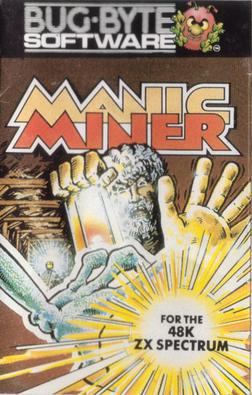
Manic Miner is a platform game written for the ZX Spectrum by Matthew Smith. It was published by Bug-Byte in 1983, then later the same year by Software Projects. The first game in the Miner Willy series, the design was inspired by Miner 2049er (1982) for the Atari 8-bit family. Retro Gamer called Manic Miner one of the most influential platform games of all time, and it has been ported to numerous home computers, video game consoles, and mobile phones.

Sabre Wulf is an action-adventure game released by British video game developer Ultimate Play the Game for the ZX Spectrum home computer in 1984. The player navigates the pith-helmeted Sabreman through a 2D jungle maze while collecting amulet pieces to bypass the guardian at its exit. The player does not receive explicit guidance on how to play and is left to decipher the game's objectives through trial and error. Sabreman moves between the maze's 256 connected screens by touching the border where one screen ends and another begins. Each screen is filled with colourful flora, enemies that spawn at random, and occasional collectibles.
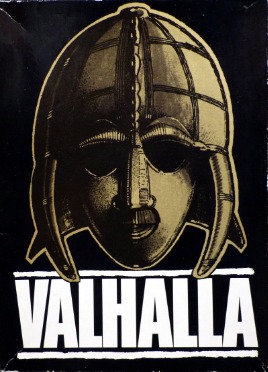
Valhalla is a text adventure with graphics published in 1983 by the British studio Legend for the ZX Spectrum. It reached number one in the UK sales charts. The Commodore 64 version of the game was released in 1984 and reached number five.

Zzap!64 was a computer games magazine covering games on the Commodore International series of computers, especially the Commodore 64 (C64). It was published in the UK by Newsfield Publications Ltd and later by Europress Impact.

Underwurlde is a 1984 action-adventure platform video game in the Sabreman series by Ultimate Play the Game for the ZX Spectrum and Commodore 64. The player controls the adventurer Sabreman as he jumps between platforms in a castle and its caverns to find an escape past the exit guardians. Underwurlde features about 600 flip screen areas. Unlike other games of its time, Sabreman is not injured when touched by enemies and is instead knocked backwards. Underwurlde is the second game in the series, between Sabre Wulf and Knight Lore, and released shortly before the latter for the ZX Spectrum in late 1984. Another developer, Firebird, ported the game to the Commodore 64 the next year.

Chuckie Egg is a video game released by A&F Software in 1983 initially for the ZX Spectrum, BBC Micro, and Dragon 32/64. It was ported to the Commodore 64, Acorn Electron, MSX, Tatung Einstein, Amstrad CPC, and Atari 8-bit family. It was later updated for the Amiga, Atari ST, and IBM PC compatibles.

CRL Group plc was a British video game development and publishing company. Originally CRL stood for "Computer Rentals Limited". It was based in King's Yard, London and run by Clem Chambers.
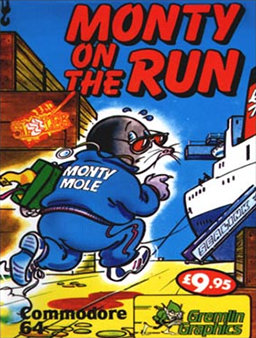
Monty on the Run is a computer game created by the software house Gremlin Graphics and released in 1985 for the Commodore 64, ZX Spectrum, Amstrad CPC and Commodore 16, written by Peter Harrap for the ZX Spectrum with the iconic in-game music on the Commodore 64 provided by Rob Hubbard. It is the third game in the Monty Mole series.

Tynesoft Computer Software was a software developer and publisher in the 1980s and early 1990s.
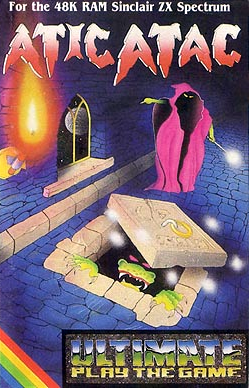
Atic Atac is an arcade-adventure video game developed and published by Ultimate Play the Game, released for the ZX Spectrum in 1983 and the BBC Micro in 1985. The game takes place within a castle in which the player must seek out the "Golden Key of ACG" by unlocking doors and avoiding enemies. It was Ultimate's second game to require 48K of RAM; most of their previous games for the Spectrum ran on unexpanded 16K models.
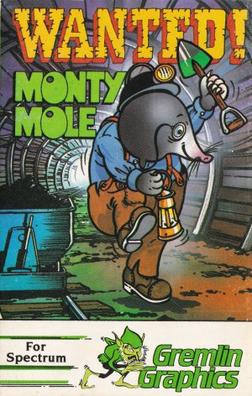
Wanted: Monty Mole is a platform video game published in July 1984 for the ZX Spectrum and Commodore 64 home computers. It is the first game released by Gremlin Graphics and the first game in the Monty Mole series. Monty Mole is a fictional mole created by Ian Stewart, the director of the company.
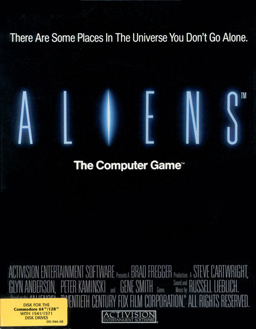
Aliens: The Computer Game is a 1986 video game developed and published by Activision for the Commodore 64, Apple II based on the film of the same title. As Activision's UK subsidiary Electric Dreams Software had independently released their own version of the game with the same title, the game was renamed for European release. Initially planned to be released as Aliens: The Second Part., it was finally published under the title Aliens: US Version with ports for the Amstrad CPC and ZX Spectrum produced by Mr Micro.

Hunchback is a video game developed by Century Electronics and published in arcades in 1983. The game is loosely based on the 1831 Victor Hugo novel The Hunchback of Notre-Dame and the player controls Quasimodo. Set on top of a castle wall, the player must guide the Hunchback from left to right while avoiding obstacles on a series of non-scrolling screens. The goal of each screen is to ring the church bell at the far right.
Alligata Software Ltd. was a computer games developer and publisher based in Sheffield in the UK in the 1980s.
The War of the Worlds, titled on screen as Jeff Wayne's The War of the Worlds and on the cover as Jeff Wayne's Video Game Version of The War of the Worlds is a ZX Spectrum video game developed and released by CRL Group in 1984. The game is based upon the 1978 concept album, itself based on H.G. Wells' 1898 novel The War of the Worlds.
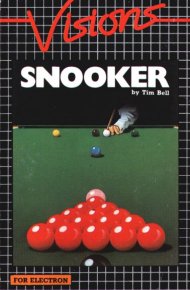
Snooker is a sports video game published by Visions Software Factory in 1983. The game simulates the cue sport of snooker. It was released for the Acorn Electron, BBC Micro, Commodore 64, VIC-20, and ZX Spectrum.
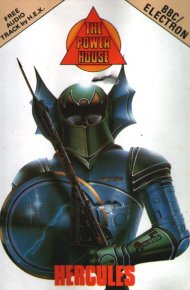
Hercules is a platform video game written by Steve Bak for the Commodore 64 and published by Interdisc in 1984. It was reissued in 1986 by Alpha Omega and ported to the Acorn Electron, BBC Micro, Commodore 16, Plus/4, and ZX Spectrum. Alpha Omega changed its name to The Power House shortly after publishing the game.
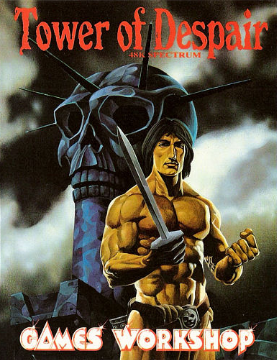
Tower of Despair is a video game published in 1984 by Games Workshop for the ZX Spectrum. A Commodore 64 version was also released.

Samantha Fox Strip Poker is a 1986 erotic video game developed by Software Communications and published by Martech. It was published on the Commodore 64, Amstrad CPC, BBC Micro, MSX, and ZX Spectrum.
Archived Personal Computer Games Magazines on the Internet Archive